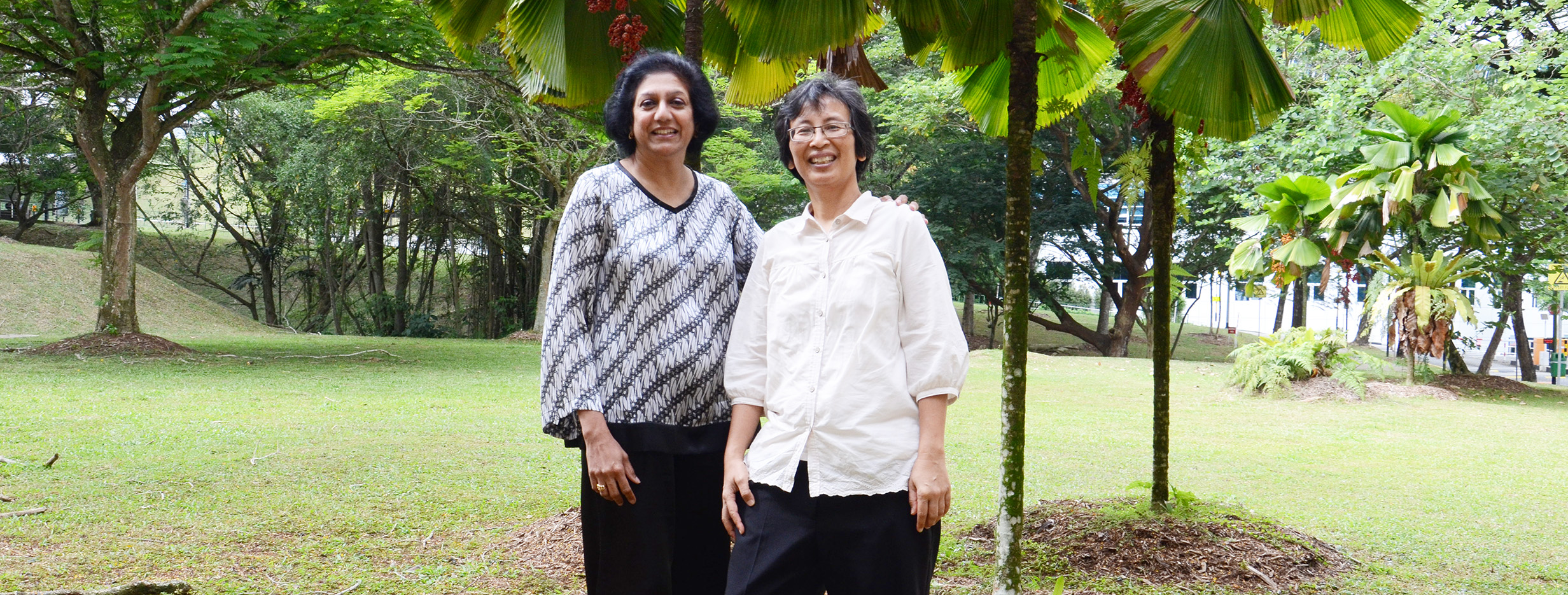Why Singapore’s English Teachers Should Embrace Singlish, Not Fight It
Is it time for Singaporean educators to embrace Singlish as a legitimate learning tool? What the Research […]
Read More

Nirmala: In 2014, NIE organized its first Henry David Hochstadt Early Childhood Symposium. Focusing on early childhood transition, our team from the Early Childhood and Special Needs Academic Group (ECSE AG) invited two experts on international transition, Professors Sue Dockett and Bob Perry from Charles Sturt University, Australia, as keynote speakers. They inspired us to come up with this project so we made a trip to Australia to talk and consult with them.
Hanin: We wanted to learn from them the kinds of methodologies we could use to guide us in our project. The information they shared helped us to shape the questions for teachers, parents and children as part of the project. As the project progressed, we wanted it to be accessible, helpful and easily digestible for all stakeholders. With that in mind, the booklet was conceived.
Nirmala: A number of primary school teachers expressed concerns that some preschools were over-preparing the children academically. The Ministry of Education, Singapore developed the Nurturing Early Learners (NEL) curriculum to support preschools in ensuring that all preschoolers enter Primary One with a common set of knowledge, skills and disposition. However, there are some preschools that overteach due to pressure from the parents. The teachers think that it is more important instead for the children to be equipped with a common set of life skills like being confident, articulate and attentive.
Hanin: Some parents expressed concerns such as bullying, making new friends and the need to be independent.
Interestingly, some parents expressed issues like making new friends and independence as goals for their children instead of concerns. Parents and teachers also saw the importance of socioemotional adjustment and academic learning. However, there were still some variations within the groups on which aspect is more important than the other. I think the important thing is for preschools and primary schools to recognize that there may be some areas where parents and teachers will agree and disagree on. I see those disagreements as diversity instead of a problem. If teachers and parents can work towards common goals while valuing those diverse perspectives, they will do well to meet the different needs of teachers, parents and children.
– Hanin Hussain, Early Childhood & Special Needs Education Academic Group
Nirmala: There are different definitions, categories and theories on play. I am going to take the NEL framework definition of purposeful play where play is defined as intentional. This means that children can learn through play, and there will be certain objectives and learning outcomes to be met. It is hoped that by implementing this curriculum, children will develop in a holistic manner that will prepare them not just for the transition phase, but also for their school years and beyond.
Hanin: I think when you think about play, there are different variations to which teachers can mobilize the different types of play. I would say that there is no one best way to teach play; each has its own value, depending on whether the teacher would like the children to experience and learn on their own or with some guidance. With that in mind, preschools should expose children to as many types and ways of play possible.
Nirmala: The research study helps us to ascertain and understand what parents’ fears, anxieties and concerns are on play and holistic development. We need real data to explore what we can do to allay some of their concerns. With the information gathered, we can identify suitable programmes and initiatives that can help parents understand, appreciate and support the move towards holistic learning.
Nirmala: A lot of effort has been put in to have conversations between different stakeholders and then attempts to join the dots together. We need to have open platforms for dialogue, conversations and continuity. We hope that more schools will come up with transition programmes to receive our children, and help them adapt and be comfortable in primary schools. It is not something that can be done overnight or in one event. It is an on-going process and I think we are moving in the right direction.